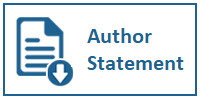LEVERAGE EFFECT BETWEEN ISLAMIC STOCK AND SRI INDICES: CASE OF INDONESIA
DOI:
https://doi.org/10.31937/manajemen.v14i2.2912Abstract
Abstract- This paper examines the difference in leverage effect between the Islamic stock index and the SRI index using the Indonesian data for a period before and during-after the COVID-19 pandemic. The interrelated issues of health and environment, starting from the COVID-19 pandemic, energy use, and environmental issues can have a different effects on different asset classes. With the distinctive feature of the Islamic stock index and SRI index, it can attract investors who want to diversify their portfolio to hedge against the health and environmental crisis. This study aims to examine the volatility risk in ISSI and SRI-Kehati as an impact of various events in 2020-2022. This paper attempts to test the leverage effect for a longer period incorporating the various major events in 2020-2022. This study uses daily price index data of ISSI and SRI-Kehati Index for the period 10/04/2013-28/11/2022 and employed the ARMA-EGARCH models to answer the objectives. The results show that there is a leverage effect in ISSI and SRI-Kehati for a period before and during-after the COVID-19 pandemic although the magnitude is lower after the during-after pandemic. The leverage effect indicates that the negative return that occurred in the constituents of both indices leads to higher volatility, implying that both indices are not prone to various events. The lower magnitude of the leverage effect on SRI-Kehati can give better assurance for investors regarding the volatility risk of the index.
Keywords: Islamic Stock Index; SRI Index; COVID-19; Crisis; Leverage Effect
Downloads
Downloads
Published
How to Cite
Issue
Section
License
Authors retain copyright and grant the journal right of first publication with the work simultaneously licensed under a Creative Commons Attribution-ShareAlike International License (CC-BY-SA 4.0) that allows others to share the work with an acknowledgement of the work's authorship and initial publication in this journal.
Authors are able to enter into separate, additional contractual arrangements for the non-exclusive distribution of the journal's published version of the work (e.g., post it to an institutional repository or publish it in a book), with an acknowledgement of its initial publication in this journal.















